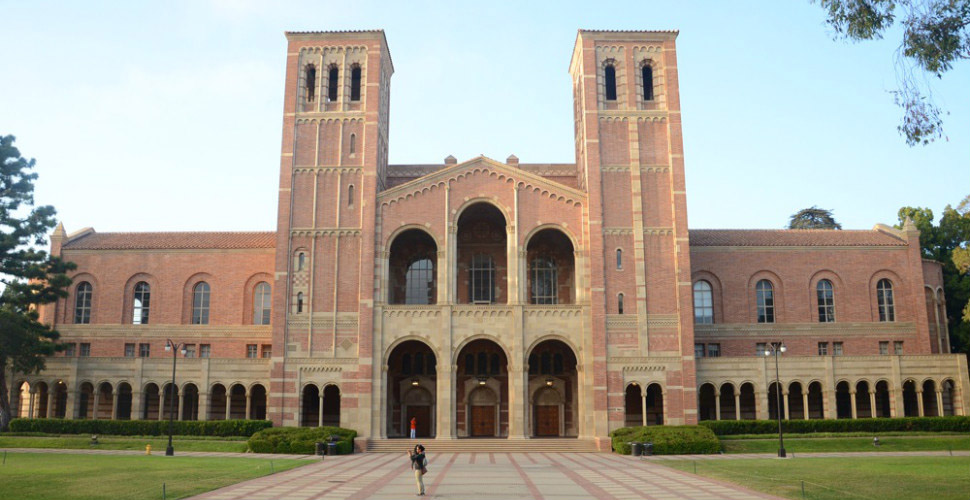The Quad: A history of Royce Hall’s speakers and performers

(Daily Bruin file photo)
By Yixuan Jiang
Feb. 15, 2017 3:42 p.m.
Before I even set foot on campus here at UCLA, I had already heard of Royce Hall. A jazz-loving friend of mine eagerly told me after I got admitted to UCLA that Louis Armstrong once performed in Royce, and urged me to visit the very stage where Armstrong gave his performance.
To fulfill my promise to my friend, I went directly to Royce Hall the first day I arrived on campus. I recall my first time standing beneath the cathedral-modeled structure, staring up at the painted ceilings and setting foot in the golden auditorium, bright skylights from each side coating the room in a warm aura. At that moment, it was not difficult for me to discern that from an architectural standpoint, Royce Hall was my favorite building on campus.
Throughout fall quarter, Royce Hall almost inevitably became one of the first stops I’d show to my visiting friends on their personal campus tours, not only because I was certain they’d compliment the building on its magnificent appearance, but also to proudly recall the great people who have stood in this hall.
Royce Hall was among UCLA’s first buildings in 1929, and was rebuilt after an earthquake collapsed the structure in 1994. While reconstructing Royce Hall, Chancellor Charles Young emphasized that Royce was the “one of the greatest historic buildings in Los Angeles” and “the centerpiece of this campus.” Although the hall was originally designated for speeches and lectures, its history of artistic performances began on Sep. 28, 1936, when the popular pianist George Gershwin performed in the hall that had been relatively obscure at the time.
It was the beginning of an era. During the first performing arts season of Royce Hall, Gershwin was followed by many other great artists such as Austrian-American composer Arnold Schoenberg – who Schoenberg Hall is named after –and jazz musician Jimmy Dorsey. Then came the second wave of performance artists, including Louis Armstrong, as mentioned before, and other well-known Hollywood celebrities such as Neil Young, Gene Kelly, Bob Dylan and Marilyn Monroe.
Of course, despite its becoming one of the nation’s most prestigious university concert halls, Royce Hall still served its original purpose as a lecture hall. Many political campaigners viewed Royce Hall as an essential stop in their paths to presidency, as well as a platform to share ideologies with curious Bruins. From Harry S.Truman, to John F. Kennedy, to Richard Nixon and to Bill Clinton, Royce Hall has hosted many political leaders over the decades.
Another person who once stirred up political controversy standing in Royce Hall was the UCLA professor and political activist Angela Davis. UCLA defended her against the UC Board of Regents when they tried to fire her for being a member of the Communist Party under the Ronald Reagan presidency. In 1969, she held a course in Royce Hall to accommodate more than 2,000 students, and 45 years later, she returned to the same stage to give another lecture.
In addition to political figures, other great minds have visited Royce Hall to spread their knowledge to the Bruin community. On Feb. 15, 1932, Albert Einstein came to UCLA as a visiting scholar from the California Institute of Technology. Royce Hall was packed with eager-eyed students as this Nobel Prize winner gave a speech on his world-famous theory of relativity. Other Nobel Prize recipients including T.S. Eliot and Ralph Bunche have also once spoke in the auditorium, enlightening student minds in the process.
Regardless if it’s from musicians, actors, politicians or scientists, shadows of innovation and wisdom still lurk within the golden corridors of Royce Hall today. It is not simply “the symbol of UCLA,” as Chancellor Young put it, but a hall bearing witness to the pinnacles of human intelligence over the last century. It stands today not merely as a campus landmark, but also a monument of history.

